Robin D. Smith
PhD Portfolio
Course
Reflections
FALL 2003
EDCI 797a:
Merging the Content Curriculum and Technology
Dr. Priscilla Norton
This
three hour course is designed to assist students in exploring and developing
expertise with emerging models of curriculum design as it can be used to
create innovative and robust learning experiences for students. Attention
is paid to understanding the role of constructivism, multiple intelligences,
expertise, representative problems, performances of understanding, FACTS,
and DEAPR as they apply to the design of curriculum. These concepts will
be used to frame activities that promote the design of virtual high school
courses.
EDIT 797a: Web-based Publishing
Dr. William Warrick
This three credit hour course is designed to assist students in mastering web
page publications. Attention will be paid to web page layout and design considerations,
page linking, effective color and font design, and web page production. These
concepts will be used to frame activities that promote the production of virtual
high school course.
TEXTBOOKS
Norton, P. & Wiburg, K. (2003). Teaching with technology: designing opportunities to learn. 2nd ed. Belmont, CA: Wadsworth.

Tapscott, D. (1998). Growing up digital: The rise of the net generation. New York NY: McGraw-Hill.
Williams, R. & Tollett, J. (2000). The non-designer’s web book: An easy guide to creating, designing, and posting your own web site. 2nd ed. Berkeley, CA: Peachpit Press.

MUDs and MOOs have become my personal symbols for the fall of 2003. I had left rural central Virginia for a new teaching job in an area that is debating whether or not it is part of northern Virginia. My youngest child had left for college, and I was living in an apartment and by myself for the first time in my entire life.
Had anyone asked me in August
or September, I would have said I was moderately “hip” about
technology and fairly current with pedagogy in English. Most people
are probably equally deluded in believing
that they know MUDs and MOOs. I
thought I understood the pastoral connotations of MUDs and MOOs.
I learned that MUDs and MOOs are acronyms for “multi-user
domain” and “object
oriented” synchronous online environments.
The coursework I began at GMU has been a critical part of my awakening.
I had planned on writing separate reflections for EDCI 797a and EDIT
797a. I cannot. The fall of 2003 really was about merging content
and technology—my own learning as well as my application of
that learning to the development of virtual high school courses.
In one
of our Instant Messenger sessions, a member of my focus group noted
that the “highly customized nature of the net. . .is causing
changes in learning and the relationship between learning and working
and daily life.” We were discussing our own high school students,
but the concept applies equally well to our learning—including
but extending beyond the Internet—in EDCI 797a and EDIT
797a.
While part of the course work introduced me to new ways of designing learning experiences (the system introduced in Norton and Wiburg’s book Teaching with Technology), this semester was largely about internalizing concepts that I knew in theory. In my experience, education courses are often about saying one thing but doing another, lectures espousing whatever the current jargon is for the most recent avatar of good instruction. This semester was different. The instruction I received modeled the instruction I learned about. (Click here to see a smattering of the assignments I constructed.) The instruction I designed for the virtual high school modeled the instruction I have been learning about and experiencing first hand.
I already knew about constructivism, multiple intelligences, representative problems, and performances of understanding. I had never heard of the FACTS model or DEAPR before, and I was introduced to other new material over the semester. I am an efficient, quick student who is proficient at many learning tasks and using many learning tools. I am different after this semester because I now believe that the context of learning is often as important as the learning itself.
Despite the fact that I know individualized instruction is better instruction, I often worked on the efficiency model—which is not efficient when the goal is developing students who are critical thinkers and lifelong learners. The fall of 2003 has enabled me to feel the FACTS that should govern the design of education—anyone’s education, including my own—in a visceral way:
-
F: The fundamentals, habits of mind or skills we want students to have forever—not just for the test next week;
-
A: Authentic problem-centered activities like those of experts that foster actively constructing meaning, include four categories of cognition;
-
C: Content that will be employed/explored in the activities, including content standards and objectives;
-
T: Tools that will best help students solve problems, learn specific habits of mind, utilize their own strengths, and minimize the effects of their weaknesses;
-
S: The system of assessment that will most authentically assess learning.
My doctoral work will involve more than my becoming a better teacher, but it must help me to formalize both a philosophy and a practice of education that hold equal validity for my and my students’ education. This semester has offered me the unique opportunity to be both observer and observed, to abandon old linear ways of perceiving and processing the world. I have changed as both a learner and as an educator. I no longer fear becoming one of those education professors who lectures for hours about “effective” methodology. I wrote the piece below for an assignment, but it summarizes the attitudes that will color the lens through which I will perceive any MUDs or MOOs I enter and any classes I take:
Education is no longer solely the prerogative of wealthy white guys. Yippee! Three facts should be changing the face of education in other ways:
-
To be considered well-rounded and well-educated, a “Renaissance man” during the 1400-1600s would need to read and remember about 100 books. Today, more than 100 authoritative texts are printed each day in any given academic field. Mastery of even one academic area is impossible, but we haven’t changed what we teach or learn. Why?
-
The learning theories most of us know and use were designed to train factory workers, but most American workers hold service not manufacturing jobs. Why is education stuck at the Industrial Revolution?
-
Most jobs require that people cooperate in diverse teams. Why do we have students learning and being assessed in outdated forms? We must learn to train our students to work together, to use their strengths, and to minimize their weaknesses. Why haven’t we made these obvious changes?
SPRING 2004
EDCI 797b: Research and Conceptions of the Content Fields
Dr. Priscilla Norton
This three credit hour course is designed to assist students in understanding state-of-the-art conceptions that guide curriculum development in their own content field. Students will divide into small groups by content area and work with methods faculty who research student learning in their own content field. These concepts will be used to frame activities that promote the design of virtual high school courses.
EDIT
797b: Advanced Web-Based Publishing and Graphics Tools
Dr.
William Warrick
This three credit hour course is designed to assist students in mastering advanced web-page design strategies. Attention will be paid to extending student knowledge about web page layout and design considerations and web page production. In particular, students will learn about strategies for adapting web publications to meet individual styles and needs and to ensure web publications meet 508 Compliance standards. Graphic selection, design, and production will be introduced during this course. These concepts will be used to frame activities that promote the production of virtual high school courses.
TEXTBOOKS
Bereiter, Carl, and Marlene Scardamalia. (1993). Surpassing ourselves: An inquiry into the nature and implications of expertise. Chicago, IL: Open Court.

Bolter, Jay David. (2001). Writing space: Computers, hypertext, and the remediation of print (2nd ed.). Mahweh, NJ: Lawrence Erlbaum Associates.
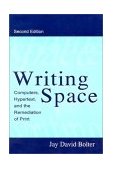
Daloz, L. (1999). Mentor: Guiding the journey of adult learners (2nd ed.). San Francisco, CA: Jossey-Bass Publishers.
![]()
Horn, R. (1998). Visual language: Global communication in the 21st century. Bainbridge Island, WA: MacroVU.

Smith, W. & Wilhelm, J. (2002). "Reading don't fix no Chevys": Literacy in the lives of young men. Portsmouth, NH: Heinemman.
Once again the two courses offered seamless instruction, so I will discuss them together.
The entire cohort read Visual Language (1998), in which Horn introduces the idea that visual language is, in fact, a separate language. His discussion of what drives visual language’s emergence is very convincing and thoughtful. Visual language is used by a community, has a distinct history, allows full expression, has novel units of communication, has a plurality of common signs, has combinable signs, is sufficiently ambiguous, and is sufficiently arbitrary and conventional. His discussion of syntax, whether it be the syntax of standard English or the syntax of visual language, definitely works: position does affect meaning. His discussion of semantics also works to a point.
Systematically explaining visual language’s effectiveness is problematical, though. Visual language is not complete and distinct; like pidgin languages; it is a new combination of older language systems with some new inventions thrown in to plug gaps. It is clear that traditional linguistic analysis does not work; trying to equate the lines of visual language with the morphemes or phonemes of spoken languages is meaningless. I also wonder if visual language is so effective because it is not restricted to a community of users; it is more easily understood by a community of users but others can also communicate and receive communication with it whether they belong to the original community of users or not. It may be that further research will plug up these holes. It may be that the matter just needs to be looked at differently. I have definite interest in visual language as a research topic. Teacher preparation programs don’t give sufficient emphasis to training teachers in effectively organizing information in print.
Our look at "Computer Graphics: Seeing and Rendering," Chapter 3 of Norton and Sprague’s Technology for Teaching (2001), provided practical assistance in using software programs to enhance the visual effectiveness of our teaching materials. This piece was probably most directly useful to designing modules for the virtual high school courses. The rest of our work was more theoretical.
I especially liked the format we used for our English content work. We were involved in planning and moderating our instruction with input from English professors at GMU. Having Dr. Norton facilitate provided an added depth and perspective to our discussions since her discipline is not English literature. For example, one of our first discussions centered on two questions: What are the ends of a good high school education? How do English / language arts classes help to promote those ends? As English teachers, it would never have dawned on any of us to ask this implied question: Why should English be included in the high school curriculum? Clarifying our ideas to Dr. Norton, a “foreigner,” forced us to do self-examination.
I came up with this list. The ends of English instruction are producing citizens
-
who can write and speak with clarity, precision, and persuasiveness;
-
who can read varied texts accurately for pleasure, information, education, and research;
-
who have the habits of mind and skills to find information and learn efficiently;
-
who can think with clarity, as much as possible free from prejudice and cultural bias;
-
who can function comfortably and effectively in the cotemporary workplace;
-
who can make informed decisions that are for the general good; and
-
who have the self-discipline to function appropriately in society.
This defining process has made me reassess some of my notions as well as my instruction.
We also read Smith and Wilhelm’s "Reading Don't Fix No Chevys": Literacy in the Lives of Young Men (2002). While the purpose of the text was to define differences in adolescent male engagement with text, it actually provided summative discussions of research (such things as Vygotsky’s zone of proximal development, which refers to the environment in which students have the maximum chance of learning) that relate to all students, regardless of gender. Examining this text also forced us to assess ways that we could address reading issues in an online environment when the traditional motivational and scaffolding opportunities would not be available. Examining the authors’ research methods has given me ideas on the limits of primary research involving students. To better help us understand the online environment as learners, we engaged in asychronous and synchronous online discussions using Digichat technology; click here and here to look at some of our prompts, commentary, and resources.
In addition, we English teachers read Bolter’s Writing Space: Computers, Hypertext, and the Remediation of Print (2001). This work was a beautiful complement to the work the entire cohort was doing. We have come at the notion that the form of text can have a defining effect on the creator of the text from several angles. Again, I am fascinated by the whole idea that form moves content. I am still mulling over some ideas introduced in Bolter’s text:
“Because writing is such a highly valued individual act and cultural practice, the writing space itself is a potent metaphor. . .for the human mind as well as for human social interaction. . . . How does this writing space refashion its predecessor? How does it claim to improve on print’s ability make our thoughts visible and to constitute the lines of communication for our society?” (p. 13).
“Each writing space is a material and visual field, whose properties are determined by a writing technology and the uses to which that technology is put by a culture’s readers and writers. A writing space is generated by the interaction of material properties and cultural choices and practices. Moreover, each space depends for its meaning on previous space or on contemporary spaces against which it competes” (p. 12).
“The question is whether alphabetic texts can compete effectively with the visual and aural sensorium that surrounds us” (p.6).
“The importance of verbal literacy in education, the traditional canon, sex and violence on television, censorship in various media—these are all disputes over the appropriate balance between word and image. Much of what American conservatives think of as the ‘culture wars’ is in fact an argument about modes of presentation” (p. 7).
“If our culture as a whole follows their [scientific researchers'] lead, we may come to associate with text the qualities of the computer (flexibility, interactivity, speed of distribution) rather than those of print (stability and authority). As early as 1993, the historian Henri-Jean Martin was willing to claim that that shift in association had already occurred. . .” (pp. 3-4).
“If prose loses its cultural warrant, then who will care about printed books, which are mostly prose? . . . Prose might have a brighter future, if it could free itself from print technology. In electronic hypertext, for example, prose might combine with audiovisual presentation and perhaps share in the cultural prosperity of the image” (p. 6).
“We might call each shift a ‘remediation,’ in the sense that a newer medium takes the place of an older one, borrowing and reorganizing the characteristics of writing in the older medium and reforming its cultural space. . . . Remediation involves both homage and rivalry, for the new medium imitates some features of the older medium, but also makes an implicit or explicit claim to improve the older one” (p. 23).
I still have more questions
than answers. That’s good.
SUMMER 2004
EDCI 797c: Designing and Teaching the Problem-Centered Curriculum
Dr. Priscilla Norton
This three credit hour course is designed to assist students in selecting and developing problems effective for centering student learning. Attention will be paid to the connection between learning and its applications as well as the role of the online teacher as expert mentor. Students will learn to assess student work for conceptual misunderstandings and strategies for promoting conceptualization and reconceptualization. These concepts will be used to frame activities that promote the design of virtual high school courses.
EDIT 797c: Advanced Graphic Design and Digital Video
Dr. William Warrick
This three
credit hour course is designed to assist students in a
comprehensive understanding
of how
to design and select appropriate graphical information for use on the
Web. Attention will be paid to graphic design principles, production
of edited
and original
graphics, and graphic file structures. Digital video will be introduced
during this course. These concepts will be used to frame
activities that promote
the production of virtual high school courses.
I have been working on the layout for a Rolling Stones magazine (note the additional s) for days; my group has decided to center a unit on the American Romantic Period around. . .a touring rock band! The Rock Bottom Remainders--a group featuring Amy Tan, Dave Barry, Maya Angelou, Norman Mailer, Stephen King, and other well-known writers--gave us the idea. Our students will be researching, reading, and writing about Edgar Allen Poe et al. in order to do a magazine spread for the American Romantics and their Americana Tour. This process is stretching me to drag out everything I have ever learned, seen, or heard.
The thing that has most struck me is that our learning is situated just as our students' learning is and just as bound by our general life experiences. We need our knowledge of pedagogy and our teaching experience to develop, refine, and organize students' learning experiences and anticipate difficulties and misunderstandings; however, our ability to generate engaging and useful problems is very dependent on our personalities, interests, and everyday activites. We have the theoretical background for developing problems that are effective in centering student learning; we are now developing the practical experience by scavenging among our real and imaginary lives as a creative writer does. The process is fun even if often grueling.
The technical aspect of our work is both engaging and frustrating. It took me 90 minutes, but I made a plane fly across a map of Japan today - on a computer screen. (Username = powerguest password = vhs35.) This is for another unit on modern American literature from the l970s. In this module, students are competing for a grant to live in Japan for a year and teach modern American culture, so I have also learned how to make an online application, complete with interactive textboxes. I am afraid that my old brain will simply explode from overload, but the worst that has happened so far is that I have had little success in making myself stop refining the technical design. I will be like Walt Whitman, lying on my death bed eager to effect some last minute improvements on my work. I have to learn to move on to the next task when a technical design is complete and adequate. Maybe next year I'll start to get bored with all of the bells and whistles. . . .
FALL 2004
EDCI 797d - K-12 Virtual Learning and Teaching
Dr. Priscilla Norton
This three credit hour course is divided into three parts. The first part is designed to develop students' knowledge about the world of online learning for K-12 students. As part of the course, students will examine the history of online learning, current trends in online learning, and the characteristics and learning needs of K-12 virtual learners. In addition, students will examine and critique sample virtual high school programs as well as selected demonstration courses made available by a wide range of service providers. Finally, students will examine the literature related to the benefits, limitations, and important criticisms of virtual learning opportunities for K-12 students. This part of the course culminates in the submission of a briefing paper presenting clear recommendations to education policy makers.
EDIT 797d - Advanced Design and Development of Virtual Learning
Dr. William Warrick
This three credit hour course is an extension and elaboration of EDCI 797a and EDIT 797b/797c and is designed to further mastery of advanced web-page design strategies. Attention will be paid to extending student knowledge about web page layout and design considerations and web page production. Prior knowledge related to graphic selection, design, and production will be furthered during this course. These concepts will be used to frame activites that promote the production of virtual high school courses.
TEXTBOOKS
Daloz, L. (1999). Mentor: Guiding the journey of adult learners. San Francisco: Jossey-Bass.
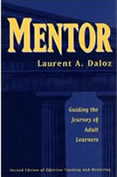
Maeroff, G.
(2003). A Classroom of one. New York: Palgrave.
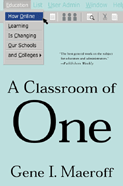
Tishman, S., Perkins,
D., & Jay, E. (1994). The thinking classroom: Learning and
teaching in a culture of thinking. New York: Allyn & Bacon.

Zimmerman,
B., Booner, S. & Kovach, R. (1996). Developing self-regulated
learners: Beyond achievement to self-efficacy. Washington, DC:
American Psychological Association.
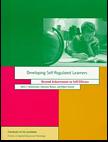
Collaboration and aggregation were the operative words for my coursework during the fall of 2004—so much so that I cannot separate the two courses. While we studied the history of online learning and examined its current state, we continued to develop skills in our role as designers of virtual learning for The Online Academy (TOA) and became online learners ourselves as we completed modules in The Online Academy for Teachers (TOAT) that will be used to educate teachers who will mentor students taking courses in The Online Academy. I also had the opportunity to mentor a high school student who is taking a course I helped to design. This aggregation of perspectives and learning has allowed me to study online learning in a unique way.
Our examination of existing online learning opportunities made me aware of the unique nature of the online academy that we are creating. Mentoring is a critical element of our pedagogical design. Mentoring as it is conceived in The Online Academy is lacking in every other virtual environment—despite the fact that it solves many of the challenges associated with online learning: a sense of isolation, a failure to develop a sense of being part of a learning community, inadequate emotional and social growth because of little interaction with an instructor, and inability or unwillingness to complete courses. Writing a briefing paper describing online learning for policy makers (with a PowerPoint to help me focus) helped me to aggregate my knowledge of and opinions about virtual learning. (I began with a comparison chart.) Collaborating with colleagues has also helped me to refine my content knowledge and discover new ways of sharing that knowledge with learners.
Mentoring has been intensely satisfying. As a mentor for a virtual high school English student, I am better prepared to design effective learning opportunities for students and to create mentor resources that are easy to use and comprehensive. Direct experience of a student’s response to graphics, page layout, and other design elements has helped me to refine my technique. As an online student with a mentor of her own, I have learned firsthand the importance of effective online interpersonal communication skills. Questioning, “listening,” and assessing student communication are not the same in a virtual environment without visual and aural cues. Being both a mentor and a “mentee” has helped me to assess virtual communication from all perspectives and to develop strategies to communicate effectively in a virtual environment as a learner and as a mentor. (Click here to look at my communications with the simulated students "Brittany," "Henry," "Kaitlin," as well as with Jessica--my living, breathing online student.)
Real learning is a matter of making connections between existing and new knowledge. I have had an invaluable opportunity to aggregate my learning this semester. I have also had unparalleled opportunities to collaborate with learners and colleagues. I have developed materials that helped me to process what I was learning; these products may also help other mentors: my mentor passport, poster, brochure, and list of resources.
I am convinced that virtual learning is another economic and social equalizer, another way to make the American Dream accessible to more people. This semester’s work has simply confirmed my belief and given me better skills to participate in this phenomenon.
SPRING 2005
EDCI 797e: Online Teaching
Dr. Priscilla Norton
This three credit hour course is designed to assist students in articulating the ways in which SOL and blueprints have been used to construct courses, in creating rubrics and other evaluative techniques for use in online learning, and in the preparation of online teacher support materials. These concepts will be used to frame effective teaching in virtual high school course environments as well as the development of teacher materials to accompany produced virtual courses.
EDIT 797e:
HTML and Java Scripting
Dr. William Warrick
This three credit hour course is designed to assist students in developing expertise with the coding structures which underlie the publication of web materials. Advanced techniques in html and java coding will be taught in order to facilitate students' abilities to embed special features in their web publications. These concepts will be used to frame activities that promote the production of virtual high school courses.
In March I was invited to discuss using technology with Dr. Hanrahan's GMU secondary English methods class. I was to share the three-hour class with someone discussing the use of film in the English classroom. I was disappointed that the film presenter came down with the flu that afternoon (I had hoped to learn some new tricks), but I was delighted that we would have longer. I put together a CD for the class that I hoped would help the students explore for themselves some of important ways technology should inform their teaching. Putting that CD together made me realize how much more I use technology in every aspect of my teaching than I did before I began my coursework in instructional technology. I also realized that the history and pedagogy behind the some of the techniques was critical but would have to wait.
As I learned more and more and as I both mentored and was mentored, I ended up going back and revising many of the mentor resources I had developed for English 11 in The Online Academy. I did a better job from the beginning of developing mentor resources for the British literature course (Username = powerguest password = vhs35.) I worked on this semester. My own experiences as a mentor warned me about what would help teachers. Developing rubrics for teachers I didn't know who would be using the rubrics on students with unidentified backgrounds and abilities made me reassess what I believe about evaluation. I began to think of rubrics and other evaluation instruments as formative rather than summative assessments. This forced me to plan modules (Username = powerguest password = vhs35.) in terms of exactly what I wanted students to be able to do or to know rather than on what material I wanted to "cover."
My technical expertise certainly has expanded. I am still no expert on html code or java script, but at least now I know enough to formulate questions, read my notes and others' code, and find answers. As I became more expert, my production time was reduced considerably. Everything from my curriculum maps to my page design and flow became simpler, more concise, more detailed, and more elegant. I have copious notes--which is a good thing--since I can remember the technical material only if I am constantly using it.
SUMMER 2005
EDCI 790f: Internship in Online Teaching
Dr. Priscilla Norton
This three credit hour course provides supervised practice in applying the knowledge and skills acquired throughout the program in an appropriate work setting, i.e. teaching an online summer school course, evaluating student learning in online environments, or teaching/inservicing other teachers as they become online teachers themselves. The exact nature of the internship will be individually planned with faculty supervision.
EDIT 797f: Web-Site Design and Management
Dr. William Warrick
This three credit hour course is designed to assist students in the design and maintenance of web sites. These concepts will be used to frame activities that promote the production of virtual high school courses.
My experiences as an online mentor have taught me much about learning in any environment and much about the importance of clear communication. Theoretically, I understood how important constructivist learning is. I have always done some constructivist instruction. Experiencing its effectiveness first hand module after module after module is another issue. I have always taught various modes of discourse, but this is the first time I have been asked to identify in advance the modes students would be learning and using. There is always some negotiation between students and teacher, but working with an educational plan that is predicated on student-teacher negotiation is also new to me. Everything was so deliberate; every attempt was made to anticipate and avoid problems because communication could be problematic. I have never participated in such consistently fine, well-structured lessons.
Communication was always written; it became obvious early that clarity--especially regarding tone--was crucial for both teacher and student. We both learned to focus and be more concise. The most surprising thing to me was that my online students had more one-on-one time with me than my face-to-face students in a class of 15. There is also something about online mentoring that forces the teacher to become a mentor, a coach, rather than a teacher who is dispensing kowledge. I wish every teacher could do some online mentoring simply as a way of improving standard classroom practices.
Maintenance of files and web sites is probably my greatest weakness. The good thing about an online environment is also the bad thing about an online environment: it is never "done." Just once I would like to complete something online and not have to go back and update or check it later for active links. Unfortunately, that is not going to happen.
FALL 2005
EDUC 802: Leadership Seminar
Dr. Scott Bauer
This three credit hour survey course is an intensive study of leadership, emphasizing decision and change processes, leadership and organization theory, and the assessment and development of leadership skills.
TEXTBOOKS
Fullan, M.
(2001). Leading in a culture of change. San Francisco: Jossey-Bass.
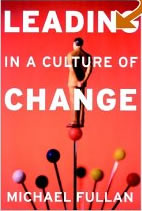
Marion, R.
(2002). Leadership in education: Organizational theory for the
practitioner. Long Grove, IL: Waveland Press.
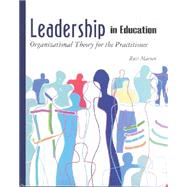
Shafritz,
J. M. & Ott, J. S. (2005). Classics of organization theory (6th ed.).
Belmont, CA: Wadsworth.
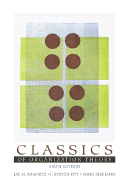
Wallace, M.
& Poulson, L. (2003). Learning to read critically in educational
leadership and management. Newbury Park, CA: Sage.
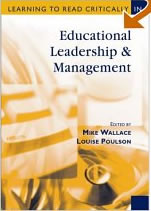
EDUC 805: Doctoral Seminar in Education
Dr. Mark B. Goor
This one credit hour course introduces doctoral students to selected faculty members in the Graduate School of Education and to the topics in education these faculty members research. Students participate in an information exchange with other students, faculty members, and other scholars concerning current research interests and scholarship.
EDRS 810: Problems and Methods in Educational Research
Dr. Frederick J. Brigham
This three credit hour advanced course in the interpretation and application of education research methods emphasizes comparison of alternative philosophies of research, ways of formulating questions/hypotheses, research plans, and analysis procedures. Students evaluate existing studies and investigate a range of research approaches.
TEXTBOOKS
Krathwold,
D. R. (2004). Methods of educational and
social science research (2nd ed.). Long Grove, IL: Waveland Press.
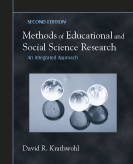
I expected this semester to end the halcyon period in which all of my graduate coursework has intersected with common themes running through everything: lectures, my thinking, my reading, and my writing. What a wonderful surprise to discover this was not the case. The leadership, doctoral seminar, and research courses all supported each other and fed seamlessly into helping me see yet another dimension of doctoral work in education: service, collaboration, and social science research hold a central position in a collegiate culture. I was also surprised to learn that I knew virtually nothing about research in the social sciences. I am slowly acquiring a new set of skills that will permit me to move beyond the practical, literary, and historical research that have been mainstays of my existence heretofore. Even writing a literature review helped me to move into this new area of expertise.
PROBLEMS AND METHODS IN EDUCATIONAL RESEARCH provided the focus around which the other courses revolved. The subtitle of the 742-page textbook, “An Integrated Approach,” was a clear clue of the organization of this course; the text’s weight was an early indication of its importance to my development as a scholar. I will use the text as a reference tool for the rest of my days, and I will continue to hone the skills I began to develop in this class. The varying methods for gathering research data were not especially alarming; getting help with finding useful databases and relevant literature was nothing essentially new. New and alarming came into play when we learned about the complexity of the policies regulating research using human subjects. I understand the concepts of balancing internal and external validity and creating a chain of reasoning, but the practice is much more difficult than the theory. This course covered so much material that I feel like the only thing I am competent at doing with regard to social science research is knowing enough to know what questions to ask and how and where to get help. But that's a start.
Writing and revising research proposals was the single most effective learning tool for me this semester. My first quantitative research proposal used a survey to identify obstacles to constructivist, inquiry-based English instruction. Of course, this was absurdly ambitious and loose. By the second draft, I had narrowed it down to an online survey about obstacles secondary English teachers perceive to their use of digital technology in instruction. My first qualitative proposal was to use action research to make recommendations about curricular choices and instructional practices in Advanced Placement (A. P.) Language and Composition English 11 and A. P. Literature and Composition English 12 courses taught to gifted secondary students at the Commonwealth Governor’s School (CGS) in Stafford, VA. By the second draft, this evolved into a constant comparison to describe curricular choices and instructional practices in the A. P. Language and Composition English 11 course taught to gifted secondary students at the CGS. The readings, the class discussion, and the hard work of creating research design and revising it with the able assistance of the professor have taught me enough to know how ignorant I am and how fascinating the world of educational research is.
My first semester in the DOCTORAL SEMINAR provided direction for my changing perspective as we read information provided by professors who then spoke to us about their research interests. In preparation for Dr. Joseph Maxwell’s visit in early September, we read “Causal Explanation, Qualitative Research, and Scientific Inquiry in Education,” which appeared in Education Researcher (2004, March, pp. 3-11). Dr. Maxwell’s article—as did my research methods class—addressed the very nature of educational research and the difference between qualitative and quantitative research. I doubt if I could have fully understood Maxwell’s article without the background provided by the other course. I am in complete agreement with Maxwell: educational research often establishes causal relationships a priori; the question, as Maxwell points out, is how does x cause y. It’s reasonable that qualitative evidence be used to establish this type of causal relationship. Maxwell’s discussion of process theory, which dealt “with events and the processes that connect them. . .[and is] an analysis of the causal processes by which some events influence others” (p. 5) described the kinds of educational research that would be useful to me. I would expect much educational research to be, at heart, causal. I agree with Maxwell “that realistic, process-oriented investigations deserve a more prominent place in educational research, including experimental research” (p. 4).
Maxwell believes that the current predominant attitude about causal research prohibits researchers from making the best use of qualitative research. He also fears that the second class status of qualitative research prevents collaboration between qualitative and quantitative researchers; what I fear more is that this attitude will prevent people from posing the real questions that could be addressed with good qualitative research, matters important to individual students and to public policy. If researchers, in the interests of “scientific rigor,” believe that they should conduct only quantitative educational research because qualitative research can be “merely descriptive,” many of the important research questions in education will never be posed, much less researched. Are we to ignore these questions because they don’t fit an antiquated research paradigm that is still in vogue? Will these questions be ignored because no one will fund their exploration?
According to Maxwell, these misconceptions lead both quantitative and qualitative researchers to ignore the use of individual cases, the importance of context, and the role of meaning and interpretation in establishing causal relationships. These misconceptions of researchers develop into what Shulman refers to as “’intellectual ghettos of their own construction’” (p. 9). The divide between the two types of researchers exacerbates the problems we face now that the ramifications of NCLB leave qualitative researchers beyond the pale and as, Dr. Maxwell put it, out of the conversation regarding educational research. If the quantitative researchers were also doing qualitative research, they would be in a better position to argue for the benefits of both types of research in describing and prescribing. How did researchers become so rarified? Wouldn’t good researchers use whatever mechanisms worked—qualitative or quantitative—to explore a research problem? Apparently not. I hope that the divide is lessening, as Dr. Maxwell indicated.
Meanwhile, public ignorance drives public policy. As Dr. Maxwell pointed out during his talk, people frequently don’t understand statistics. I believe that people are so intimidated by statistics that they don’t question hard data for fear of looking stupid. They often don’t understand qualitative research either, but they think they do and are vocal in their demands—much as they know what is best for education because they went to school themselves. We hear about teachers doing “action research” that turns out to be no more than observation or description. But carefully designed action research is useful. There is definitely a place in education—with the individual teacher and even policy—for establishing causal relationships based on single events or cases. It’s scary that prejudice and politics are driving something as important as educational research.
The rest of the semester in the doctoral seminar provided insight into the research interests of other GMU professors as well as their other professional responsibilities. Research topics varied from using surveys to collect information on the education of incarcerated youth to comparing reading scores of students from all over the world to using eye gaze tracking technology to evaluate students’ expertise while taking a science assessment. We looked at professors’ responsibilities beyond the classroom: in editing and contributing to publications, in expanding the knowledge base, and in helping the community at large—even the international education community with the Secondary Education Activity (SEA) and International Reading Association. The use of Blackboard to formulate questions, reflect and interact with colleagues, and summarize responses to presenters helped us to put the variety of material we read, saw, and heard in a new perspective, as did the midterm and final reflections. It was informative hearing professors in my leadership and research methods courses speak to this class about their research interests rather than confine themselves to the demands of our regularly scheduled classes.
To be frank, I was irritated that I was required to take the LEADERSHIP SEMINAR, believing it to be irrelevant to my interests and needs. The course was fascinating and helped me to understand some of the bizarre features of public education. We used formal organization and leadership theory as a lens through which to examine public education. We looked at everything from Taylor’s scientific management and Weber’s bureaucracy to open systems and complexity. For each theory, we examined the kinds of research questions raised and addressed, the ramifications for practice, and the limitations. The goal was to help us develop our own personae and perspective as practitioners and researchers. We gained expertise by writing critiques of others’ research. We had a choice of articles for each critique. For the first critique, I selected an article about research into the effect of school choice and transfer that was published in Education Policy Analysis Archives. For the second critique, I evaluated an article about research on the effect of school climate on teachers in schools in two cities in Turkey that had been submitted to the Journal of School Leadership. Examining these articles from the standpoint of theoretical perspective and research validity added another layer to my experience; in each case, the research questions held personal interest for me. Our final exam required that we write Dr. Charles Perrow, suggesting theories to include in an updated version of his classic, The Short and Glorious History of Organization Theory (1973). The entire semester segued from one aspect of research and collaboration to another in one seamless learning experience.
SPRING 2006
EDUC 800: Ways of Knowing
Dr. Anastasia P. Samaras
This three credit hour course examines the realm of epistemology as it relates to research and inquiry methods and the psychological and sociocultural construction of knowledge. The course is designed to support students' awareness of their own ways of knowing and their exploration of alternative ways of knowing as conceptual and practical research tools.
TEXTBOOKS
Bruner, J. (1986). Actual minds, possible worlds.
Cambridge, MA: Harvard University Press.

Descartes, R. (1637). Discourses on method and related
writings. New York: Penguin Classics.

John-Steiner, V. (2000). Creative collaboration. New York:
Oxford University Press.

Kuhn, T. (1976). The
structure of scientific revolution.
Chicago: Chicago University Press.

EDUC 805: Doctoral Seminar in Education 2
Dr. Anastasia P. Samaras
This one credit hour course introduces doctoral students to selected faculty members in the Graduate School of Education and to the topics in education these faculty members research. Students participate in an information exchange with other students, faculty members, and other scholars concerning current research interests and scholarship.
EDRS 812: Qualitative Methods of Educational Ressearch
Dr. Joseph A. Maxwell
This three credit hour course introduces the essential characteristics of qualitative research. The course supports students' understanding of the assumptions embodied in the major approaches to qualitative research studies and their ability to design and carry out qualitative studies.
TEXTBOOKS
Becker, H. S.
(1986). Writing for social scientists:
How to start and finish your thesis, book, or article. Chicago:
University of Chicago Press.

Emerson, R.,
Fretz, R., & Shaw, L. (1995). Writing ethnographic fieldnotes.
Chicago: University of Chicago Press.

Glesne,
C. (2006). Becoming qualitative resarchers:
An introduction (3rd ed.). New York: Longman.

Maxwell, J. Qualitative
research design: An interactive approach (2nd ed.). Thousand Oaks,
CA: Sage Publications.

Weiss, R. (1994).
Learning from strangers: The art and method of qualitative interview
studies. New York: Free Press.

I entered QUALITATIVE METHODS OF EDUCATIONAL RESEARCH aware of my ignorance, but my experience with Dr. Maxwell in Doc Seminar had intrigued me. I leave it with an increased respect for the complexity and usefulness of qualitative research and a much more precise awareness of my potential flaws as a researcher. The design of the course assured that I know about the theory behind qualitative research, was exposed to a variety of qualitative studies, had experience evaluating qualitative research, and had guided practice as a real qualitative researcher myself. I have much clearer ideas about the role of the researcher, selecting a setting and participants, developing relationships, and collecting and analyzing data. This course has given me an inkling of what the dissertation process will be like. The process of doing a qualitative research project examining gifted high school students’ perceptions about their own learning styles and broadcast technology as an instructional method helped me to situate all I have learned. The progression of my growing insight can be traced in these memos: project idea memo, researcher identify memo, research relationship and data collection memo, and data analysis and conclusions memo. The final qualitative research project is my attempt to pull all of this information together in a way that is meaningful to me and any readers.
In January, while I thought I knew a lot about the many WAYS OF KNOWING before I entered the class, I was very interested in the extensive reading list. For decades, I have planned lessons that appeal to different types of learners and taken into account that all learners bring different experiences to the learning. I have tried to provide an array of approaches in the hopes that one or more will “take.” For years, I have worked with my students, trying to help them take responsibility for their own metacognition. In my current job, our students do learning style inventories so that they are aware of themselves as learners. I teach my students to examine literature through the lens of different literary theories. I would have considered myself to be a fairly open, non-judgmental, thoughtful person. I had been collaborating closely with the English contingent of my GMU instructional technology cohort for two and a half years on projects, so I thought I knew a lot about working with critical friends. In reality, I was clueless about a number of things—or I “knew” them only on a very superficial level.
The most significant thing that has happened to me in the process of this course is that I now understand—in a visceral way—that knowing is not something done only with the intellect. I also know in a visceral way that people can know in very different ways. I have understood these two related concepts in a cerebral way for ages, but I’m not sure that I ever really believed them before or ever really internalized them in any significant manner. I do not think it has ever occurred to me before that learning in a different way may mean learning something totally different. Before this class, if I were engaged with others in the same learning experience, I would have thought that anyone whose learning did not parallel mine had gotten it wrong or simply didn’t “get it.” I’m not so stupid and ignorant about myself as to believe that I am never wrong, that my perspective is never prejudiced or out of kilter, but I generally expect myself to be as objective as possible about what is going on and about others’ responses; however, my experiences in Ways of Knowing have shown me that reality is much more complicated than I suspected. My original paper proposal, gives a glimpse of my thinking at the beginning of the course. My final knowing project, which is very different from what I originally planned, demonstrates my growing appreciation for the complextity of our myriad ways of knowing.
Prior to this semester, I would have described multiple ways of knowing as being like color blindness: we see different colors or variations of colors, depending on our neural receptors or cultures. In reality, a better comparison might be the difference between using sight or sonar: we can use them for roughly some of the same purposes, but what we experience may be unrecognizably varied. Art has always been very important to me, and I often use artwork to give more substance to the background for a piece of literature or a period, but I would not have seriously considered it a way of “knowing” before this class—a way of showing maybe but not a way of knowing. While the national board certification process trained me in reflection, the constant reflection in this course has made me a more habitually reflective person. This is evident in the weekly essays: Scientific Ways of Knowing, Constructivist or Cartesian, Women's Ways of Knowing, The Narrative, Competing Theories, Conceptual Conflict & Complementarity.
These changes have been largely produced by the group work (Simultaneously defending Descartes, Kincheloe, and Kuhn to a group largely composed of scientists and mathematicians can be life-changing!) and Dr. Samaras's practice of consistently and routinely designing lessons that forced us to employ different ways of learning, not just those with which we are most comfortable. I have been on the delivery end of lessons that utilize varied ways of knowing, but I have designed these lessons using “my” ways of knowing. This semester, my first experience of being repeatedly on the receiving end of this kind of instruction, has changed my perspective. The film collaborative was another learning opportunity that made us explore our own and others' perceptions.
For most of my professional life, I have worked alone in English and humanities classrooms. I might collaborate with colleagues for specific projects or departmental efforts, but I largely functioned and learned alone apart from my students. That has changed over the past three years since I have been working at GMU on The Online Academy and teaching high school English in an interdisciplinary setting. I lost independence but gained perspective, variety, and depth. Seeing myself within these groups has helped me to see myself more clearly. Starting in July, I will be working at GMU educating online teacher mentors. I will be closeted full time in one room with four other women. I am not sure that I will know where I end and they begin—physically or intellectually. I doubt if I could have handled the inevitable conceptual conflict and complementarity effectively before the experiences I have had in this class. I was particularly delighted to find that conflict is a vital ingredient for learning and collaborating!
At the first class meeting,
someone came up with the term "Connect the Docs" to describe DOCTORAL
SEMINAR IN EDUCATION 2. We all thought this was an improvement on the
more common epithet "Docs on Parade" since we were constantly
making connections. While the original intent of this course may have
been to expose doctoral students to a variety of research
interests and methods as well as helping us to identify possible advisers,
I also found that it related to my other course work and professional
interests. We had presentations from a number of professors on a number
of topics; my summary of my group's discussion of Dr.
Hjalmarson's
fascinating work with the design process will give an idea of the connections
that exist between these experiences. My landscape
map includes a visual representation of the ideas and
methods explored by all of the professors who spoke with us.
These three courses
have moved in tandem, leading me to understand that my personality, experience,
point of view, and theoretical beliefs inform everything I
do. The three classes have also exacerbated my research problem, giving
me
more and
more ideas about topics and approaches. That is unfortunate.
I already had too many choices; now I have expanded, richer possibilities.
The flip side of that is that I have better skills with which
to make decisions.
Unfortunately, these courses have not changed my basic nature: I still cannot make up my mind. I'm glad that Sullivan is right: Knowledge is not to know with certainty but to explore, form opinions, and argue about meaning--not because there is only one way or thing to know but because the trying to know is the real task. As a result of this semester, all of the learners and knowers lurking inside of my skin have even more ways to explore how little they know.
FALL 2006
rsmithm@gmu.edu
Major: Instructional
Technology
Minor:
Curriculum & Instruction
Doctoral
Advisory Committee:
Dr. Priscilla Norton, Chair
Dr. Kevin A. Clark
Dr. Penelope M. Earley
George Mason University
4400 University Dr.
Fairfax, VA 22030

